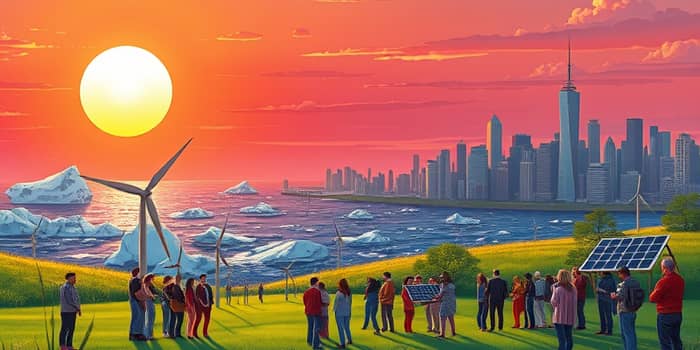
As global temperatures climb, the financial stakes have never been higher. From lost agricultural yields to damaged infrastructure, the world faces trillion-dollar scale global losses if decisive action is delayed.
This article unpacks the economic projections, sectoral vulnerabilities, policy pathways, and innovative levers that can steer us toward a resilient future.
Under a business-as-usual trajectory, estimated global losses between 2025 and 2100 could reach $2,328 trillion. By contrast, limiting warming to 1.5°C would halve those losses to $1,062 trillion, avoiding over $1,200 trillion in damages.
The main drivers of these losses include increased weather-related and uninsurable damages, higher production costs, health expenses and productivity losses. Crucially, these figures exclude indirect impacts such as biodiversity loss, migration pressures, and conflict.
Allowing warming to rise to 3°C by 2100 could slash cumulative global economic output by 15%–34%. In contrast, a mitigation investment of just 1%–2% of global GDP could keep damages within 2%–4% of GDP, a small fraction of the cost of inaction.
Climate change does not impact all industries equally. Key sectors face distinct threats:
Disparities are stark. The poorest and most vulnerable populations—often in lower-lying, hotter regions—will bear the heaviest economic burdens. Within the United States, the lowest-income third of counties could face damages equal to 2%–20% of county income under high-emission scenarios, while wealthier areas see far less impact.
Governments and businesses can deploy a mix of market-based tools and targeted investments to curb emissions and bolster resilience.
Revenues from carbon pricing can be redistributed to protect low-income households, ensuring equity and public policy balances climate goals with social fairness. Redirecting subsidies and investments toward clean energy, sustainable transport, and building retrofits amplifies both economic growth and environmental benefits.
With redirecting investment toward green sectors and innovation, mitigation costs of 1%–2% of GDP can avert losses exceeding 20% of cumulative GDP by century’s end.
Beyond policy, technological advances and shifts in consumer behavior are critical. Breakthroughs in renewable energy, energy storage, and carbon capture can transform energy systems. Meanwhile, adopting low-carbon lifestyles—opting for public transport, improving home efficiency, and reducing waste—plays a significant role in reducing emissions.
Alleviating poverty also strengthens climate resilience. Reducing vulnerability through improved education, healthcare, and infrastructure yields compounding benefits, linking social progress with environmental outcomes.
The evidence is clear: the cost of inaction will vastly outweigh the price of proactive investment. As economic losses mount into the trillions, the window for limiting warming and safeguarding prosperity narrows.
By embracing market-based solutions, championing innovation, and ensuring fairness for vulnerable communities, policymakers can unlock pathways to a resilient, low-carbon future. The time to act is now—our global economy, health, and security depend on it.
References













